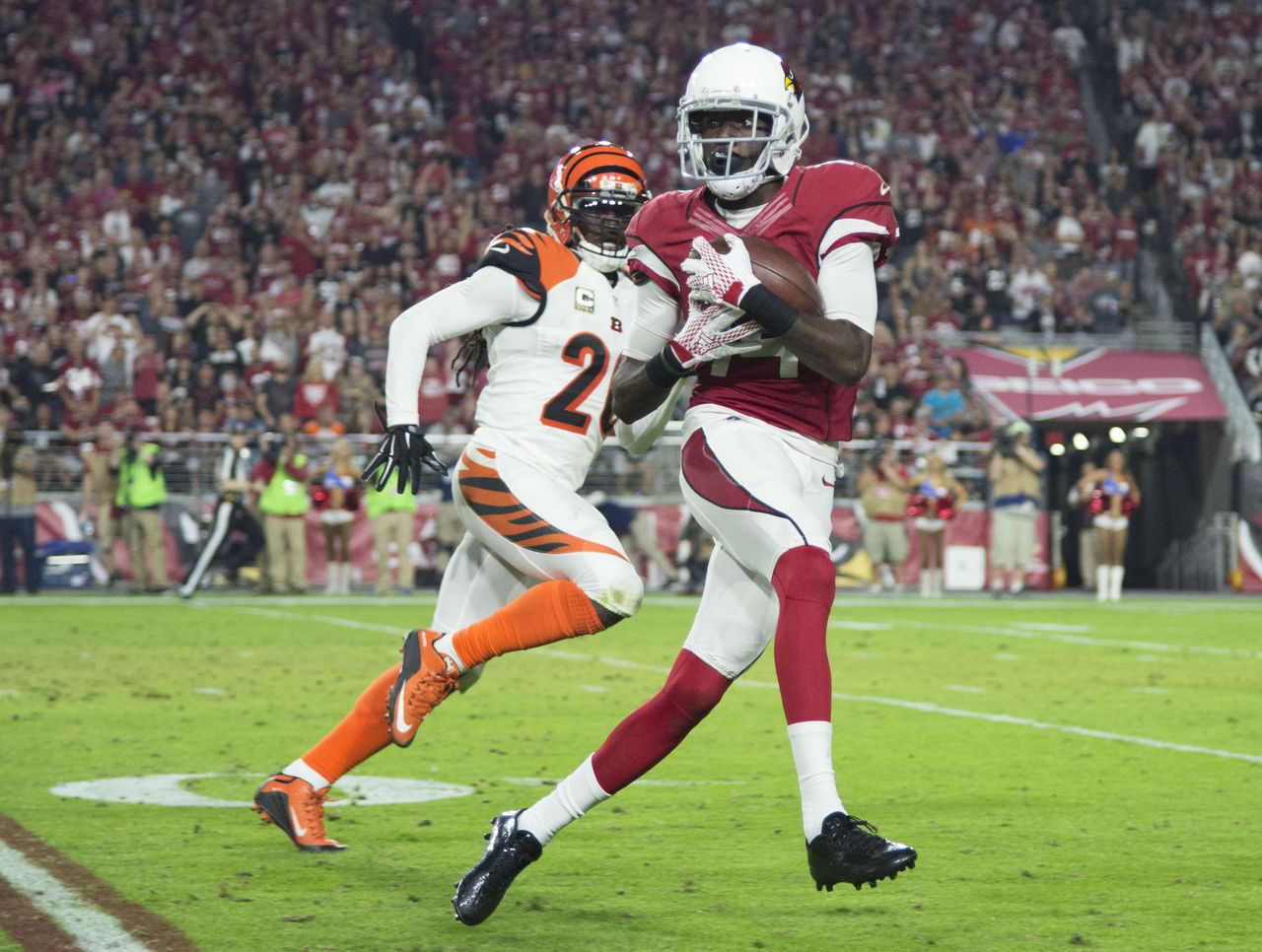Which second-year WRs will take "the leap"?
Often it can take a wide receiver a full year in the NFL before he fully grasps how to succeed at the pro level. Route running specifically is much more complex in the NFL compared to college. The windows NFL QBs throw at are way tighter, making every step in a single route that much more precise.
Many receivers - from first-round picks to undrafted players - don't find their footing in the NFL until their second year. Take a look at these examples:
| Player | Rookie Rec Yds | Sophomore Rec Yds | Difference |
|---|---|---|---|
| Brandon Marshall | 309 | 1 325 | + 1 016 |
| Antonio Brown | 167 | 1 108 | + 941 |
| Alshon Jeffery | 367 | 1 421 | + 1 054 |
| Allen Robinson | 548 | 1400 | + 852 |
Marshall and Brown were both late-round picks, so they weren't given a great opportunity in their rookie seasons. Jeffery and Robinson are both big-bodied receivers who were a bit raw coming out of college, so it made sense why they didn't shine until their second season.
Here are five receivers who showed flashes of brilliance in their rookie seasons, but could very well put it all together in their sophomore seasons:
DeVante Parker, Miami Dolphins
Parker's rookie season was viewed overall as a disappointment. After the 2014 WR class had several players make an immediate impact, expectations were high for Parker, who was the third wideout taken behind Amari Cooper and Kevin White with the 14th pick in the first round.
He caught just 26 passes for 494 yards and three touchdowns, but 22 of those receptions, 445 yards and all three touchdowns came during the final six games of the regular season. If you extrapolate those numbers over a full season, Parker would wind up with 64 catches on 112 targets for 1,184 yards and eight touchdowns.
Then there's the impact that new head coach Adam Gase will have on the offense. Throughout his tenure as an offensive coordinator with the Denver Broncos and the Chicago Bears, Gase routinely fed targets to his X receivers - Demaryius Thomas and the aforementioned Jeffery (both of whom happen to matchup eerily similar to Parker from a physical standpoint):
| Player | % of team's targets w/ Gase |
|---|---|
| Jeffery | 31.2 |
| Thomas | 25.5 |
*Jeffery's target percentage only includes the nine games he played in last season.
Although Jarvis Landry will eat up plenty of targets in the slot, Parker will surely be the No. 1 target on the outside and the top red zone threat.

Tyler Lockett, Seattle Seahawks
Lockett was used primarily as a return man and gadget player in the first nine games of the regular season. However, from Weeks 11-17 he caught 30 passes on 40 targets for 371 yards and five touchdowns. If you project those numbers over a full season, Lockett would have finished with 80 catches on 107 targets for 989 yards and 13 touchdowns.
Perhaps the most impressive part of those numbers is the 75 percent catch percentage. Even including the first nine games of the season, his catch percentage for the full year was 73.9.
Doug Baldwin is listed as the team's No. 1 WR, but Lockett could very well dethrone him. His speed and skill set exceed that of Baldwin, who is coming off his first 1,000 yard season.
Even if Lockett can't overtake Baldwin as Russell Wilson's top target, the second-year WR can still be productive. Despite losing Marshawn Lynch, the Seahawks will still try to establish a ground game with Thomas Rawls, Christine Michael and C.J. Prosise. However, it may be difficult with one of the league's worst offensive lines.
According to Pro Football Focus, four of the five projected starting offensive lineman on the Seahawks were graded as "poor" players. The other is a rookie and has no grade. This could make it tough to establish a running game and force Seattle to go to the air, much like they did in the second-half of last season - when Lockett was most productive.

J.J. Nelson, Arizona Cardinals
Nelson is easily the biggest wildcard out of these three wideouts. It would likely take an injury to either Larry Fitzgerald, Michael Floyd or John Brown for Nelson to be consistently productive. Nonetheless, Nelson will still be involved in the offense as the fourth receiver in Bruce Arians' aerial atttack.
The speedy, stringy receiver caught 11 passes on 27 targets for 299 yards last season. No, that is not a typo; he averaged 27.2 yards per catch.
Nelson ran a 4.28 40 time at the 2015 combine - the fastest of any player who participated, and extremely close to Chris Johnson's record of 4.24. The bottom line is that this guy can flat out fly.
Weight still needs to be added to fill out his 5-foot-10 frame. Considering his small stature, Nelson has exceptionally long arms (31 1/8 inch, to be exact) to go along with plus hands. Both are crucial characteristics for an undersized home run-hitter like Nelson. Don't be fooled by his low catch percentage, as the majority of targets were way downfield.
A great player comparison for Nelson is DeSean Jackson. Nelson is fully capable of a Jackson-like season of 50 receptions for 900-1,000 yards, but again, it would likely take an injury to one of the team's top three receivers.
Nelson can be taken in the final rounds of deeper leagues. If he goes undrafted, be sure to pick him up following an injury to Fitzgerald, Floyd or Brown. At the very least, Nelson's week-to-week upside make him an outstanding late-round pick in best-ball (set and forget) formats.